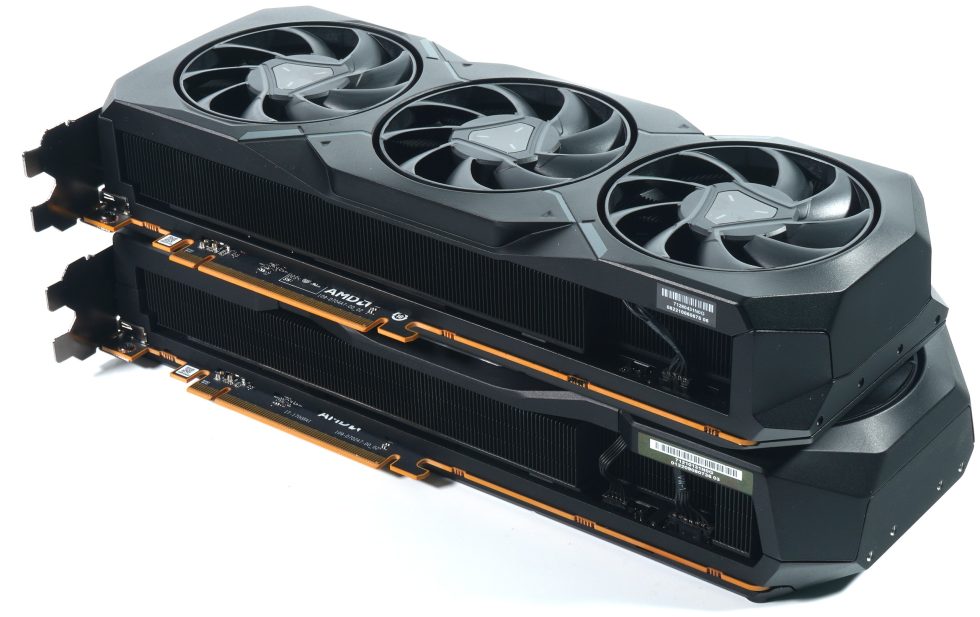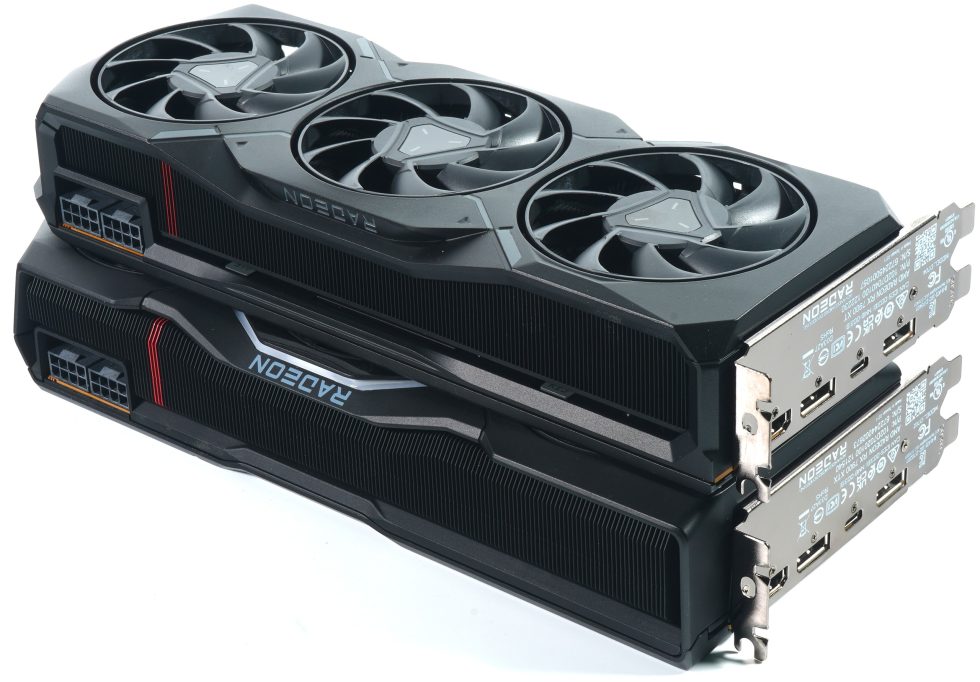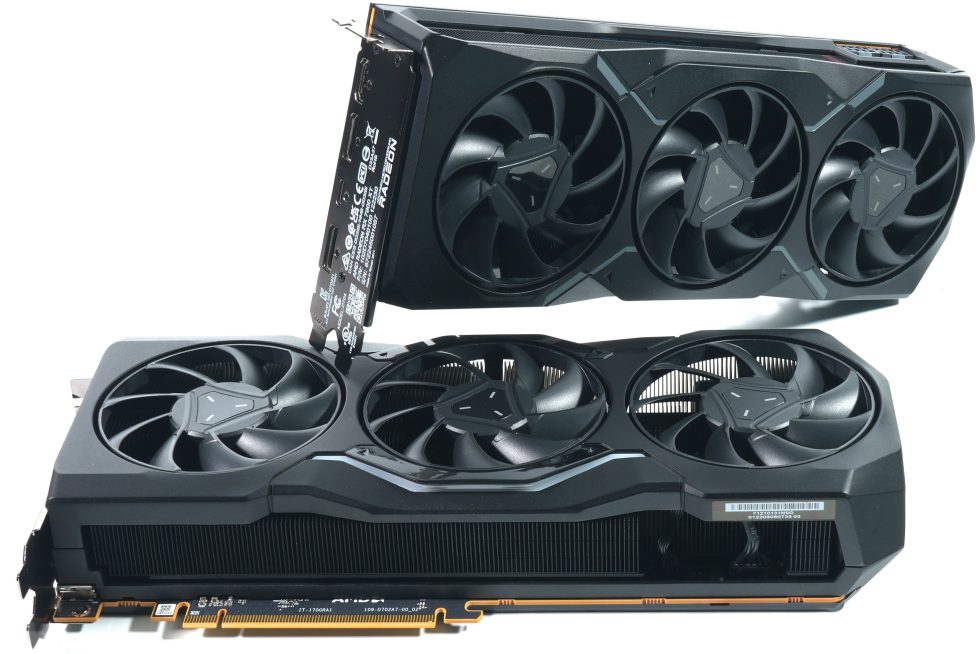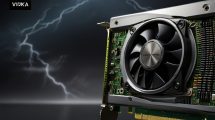Summary
Yes, AMD has done nothing wrong with both the Radeon RX 7900XTX and the Radeon RX 7900XT. With an MSRP of 1149.00 Euros for the RX 7900XTX and an MSRP of 1049.99 Euros for the RX 7900 XT, the price is also quite good, even though the GeForce RTX 4080, which is given as a comparison, has dropped considerably in price in the meantime. AMD still undercuts the current street price of the cheapest NVIDIA card by 200 and even 300 Euros respectively with the two reference cards. But even that is not cheap.
The raster performance of the new RDNA cards is 8.5 percent higher than that of an NVIDIA GeForce RTX 4080 Founders Edition in WQHD and even 9.3 percent higher in Ultra HD in the sum of all benchmarks. This is really respectable, even though the GeForce RTX 4090 cannot be attacked and this should hardly be possible even with extreme OC and the electric crowbar. Compared to RDNA2, AMD has thus managed a very big, if not huge, leap, if you take Ada as a comparison. In return, the efficiency is not quite as high as hoped. But more on that in a moment.
The ray tracing performance has also taken a big step forward and is now on par with the biggest Ampere cards. This also deserves praise, even if there are still double-digit performance gaps to be observed. But the gap has narrowed. This also applies to things like the excellent video encoder, which I will test separately one day. There was simply no time for that in the sum of all tests, especially since one should still wait for further applications that finally support it.
AMD has completely turned telemetry on its head, which has worked out well in most respects. The fact that you can finally read out a TBP that is reasonably accurate, even if it is only a good estimate, is a big step forward. NVIDIA has long relied on real monitoring of the rails via shunts, while AMD now at least uses the summation of all values from the DCR and some mathematics, which is also possible.
I see a real need for improvement in the drivers. A lot of potential should still lie fallow here. Conscientious inconsistencies could also indicate that hardware problems might have been actively addressed via software fixes, but that’s just pure speculation. What doesn’t fly at all, however, is the shockingly high idle power consumption, especially in multi-monitor mode. Which brings us to the power consumption and efficiency.
The fact that the power consumption values are so far above those of a GeForce RTX 4080 FE in the summation over several games is actually almost depressing in view of the PR appearances in the run-up. The GeForce RTX 4080 FE is up to 114 watts (!) below an RX 7900XTX in the worst case for the AMD card, which almost shocked me a bit personally. No matter if WQHD or Ultra-HD, with or without ray tracing, the two RDNA3 cards actually used the power limit almost always and very consistently, while the GeForce RTX 4080 FE was more or less clearly below the specified TBP depending on the load. For those who don’t believe it, I recommend the pages with summaries of all the games in the first third of the article.
It is quite likely that AMD subsequently clocked both cards a bit higher and provided them with a more generous power limit (TBP) when they noticed what was really coming with Ada. This looks a bit like Polaris, when they gave the RX 480 significantly more power in the very last moment, but not only got stuck in the corset of the single 6-pin connector, but also broke and clearly exceeded the standards for the PEG. I had uncovered this at the time and also made it a topic of discussion.
AMD did not repeat the mistake in the Radeon RX 7900XTX, but placed itself just below the maximum allowed. Since only two 8-pin sockets were wanted (marketing promise efficiency?), the reference was also indirectly slowed down for OC. Many board partner cards don’t have this bottleneck and rely on honest three 8-pin sockets. In addition, the motherboard slot is also used very extensively for the 12 volt power supply, which is rather suboptimal because you then also release many transients via the motherboard (e.g. audible intermodulations in the audio branch). NVIDIA is now much better at this.
Why I put the smaller Radeon RX 7900XT on top in the picture? It is certainly the better alternative to the GeForce RTX 4080 in terms of price, even though it cannot keep up in terms of performance. The Radeon RTX 7900XTX is more for enthusiasts, but the same applies here as with the GeForce RTX 4090. You have to want and be able to afford a bit of unreasonableness, but it’s just a bit more fun in the final meters. In terms of price, the Radeon RX 7900XTX is even a real alternative to the RTX 4090. AMD’s top model is not that much slower, but much cheaper.
Despite all the advantages and positive trends, I do not want to give either reference card a purchase tip for the time being. The unnecessarily high idle power consumption, which is 100% higher than the competitor’s values and virtually explodes in multi-monitor mode, as well as many imponderables and problems in the driver, which actually exclude professional use without deeper tests of the respective application, speak against it. That may sound harsh, but certification processes must also be gone through here before a recommendation can be made.
The performance in all games without ray tracing, on the other hand, is commendable, it’s just that not really extremely many games have been sufficiently considered in the driver. There is still a huge mountain of work ahead of the driver team in Toronto. Fine Wine and such. Finally, there is an extra praise for the telemetry, even if it can’t conceal all problems. But at least now the misinterpretation of TBP and TGP stops, thanks for that. For the selected node, however, the efficiency is unfortunately still expandable. Maybe we’ll see another RDNA3 refresh in 2023? That would be desirable.
And as a conclusion, it can be left that potential buyers of a Radeon card, if they prefer the red stock (for whatever reason), will definitely not go wrong. The price is right, and so is the performance. You first have to get that right. 🙂
The graphics cards were provided by AMD for this test. The only condition was compliance with the blocking period; there was no influence or remuneration.
- 1 - Introduction, technical data and technology
- 2 - Test system with the igor'sLAB PC from MIFCOM
- 3 - Teardown: PCB and Components
- 4 - Teardown: Cooler and disassembly help
- 5 - Summary gaming performance WQHD (2560 x 1440)
- 6 - Summary gaming performance Ultra-HD (3840 x 2160)
- 7 - Single charts for WQHD (2560 x 1440)
- 8 - Single charts for Ultra-HD (3840 x 2160)
- 9 - Workstation graphics and rendering
- 10 - Power consumption in detail and load balancing
- 11 - Transients, limits and PSU recommendation
- 12 - Clock rates, temperatures and infrared
- 13 - Fan speed and Noise
- 14 - Summary and conclusion





































892 Antworten
Kommentar
Lade neue Kommentare
Mitglied
1
Urgestein
Urgestein
Mitglied
Mitglied
Neuling
Urgestein
Veteran
Urgestein
Neuling
Urgestein
1
Urgestein
Veteran
Mitglied
Mitglied
Urgestein
Mitglied
Alle Kommentare lesen unter igor´sLAB Community →